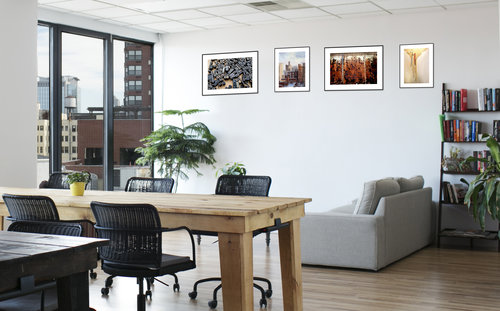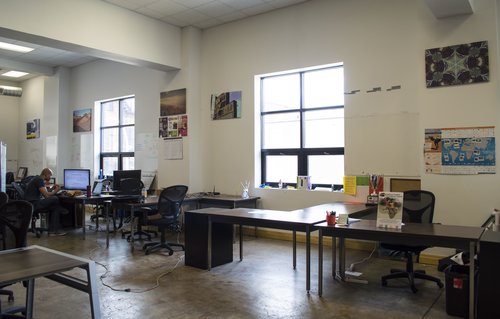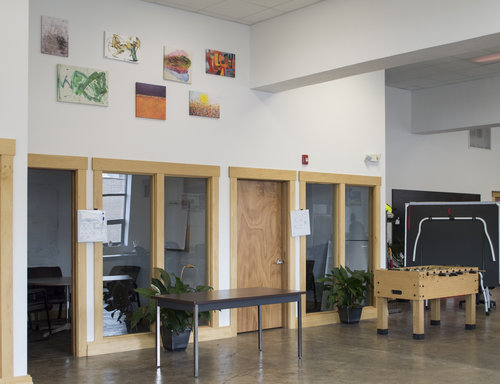by guest blogger Samantha Ward
Answers to frequently asked questions from artists about making quality reproductions of their work.

Q: How do I make sure the reproductions that are made of my artwork are top quality?
A: Many artists worry that reproductions (or prints as they are commonly called) of their artwork will not be an accurate representation of their original piece. However, with the proper preparation and production, reproductions can beautifully represent your original artwork, and even offer special features that original pieces can’t.
Documentation:
We recommend having your work professionally documented by a photographer who knows how to light your piece properly and edit the documentation. If you prefer to take photos yourself, try to use natural lighting and a DSLR camera to get the best possible photograph of your work. Make sure there is no glare or shadows in your documentation, and be sure to crop out any background. Shoot in RAW format if possible, so your file size is as large as possible. Your file size should be 300dpi and over 10MB for top-quality reproduction. For best quality printing, you should save your file in a CMYK color space.
Printing:
The second step to excellent reproductions is a top-quality printer. You can shop around local and national printers to find the best price and quality for you, and can find providers to make museum-quality reproductions durable enough to last for over 100 years. UltraChrome HD inks have a wide, rich color gamut range ensuring that our printers match the exact color fidelity of the original piece of artwork. You will want to use the best materials to ensure that the reproductions look and feel great.
Artists can experiment by making reproductions of their artwork on a variety of materials. One of the most popular reproduction materials is a mirror wrapped canvas, which can be printed on fade-resistant canvas with archival inks. Another classic option is framed giclee reproductions.
More adventurous customers may order reproductions on acrylic, a slick plexiglass that stands out beyond traditional canvas and framed prints. Finally, for a unique, new look, artists can try printing their pieces on aluminum. This works by infusing dyes directly into coated aluminum sheets. Offering a wide selection of reproduction materials on an online art platform caters your art to a wide range of clients.

Q: Why would I make reproductions of my original artwork? Can’t clients just buy the original?
A: Some artists prefer to avoid making reproductions of their original artworks. Occasionally, artists with gallery representation do not have reproductions made because it lowers the value of their originals. Of course, it is an individual decision whether or not to even offer reproductions of your work, as it is right for some people and not for others. If possible, offering reproductions can give an artist an advantage in the art market.
Often times, clients who are looking for artwork for their work spaces want a huge number of pieces that have a consistent look and design. Unless you have hundreds of original pieces that are all the same size, identically framed, and in the exact framing color scheme a client wants, your original pieces will be automatically ruled out.
When you allow prints to be made of your artwork, it is suddenly available to a larger range of clients. Now buyers can pay to have your pieces with a particular frame and mat or printed on a unique material hanging for their workspace. They get to enjoy a variety of artists’ artwork while maintaining a clean, uniform design for their office space. Reproductions can also be utilized for art rental, a phenomenon becoming popular in the corporate, wellness, hospitality, and restaurant industries!

Q: How do I cater my artwork reproductions to large clients?
A: In order to cater your artwork for large clients in corporate offices, healthcare, or hospitality, it’s useful to try to imagine your pieces in large spaces. Do you have several pieces that work well in a series or triptych? Do you have documentation of your artworks that is good enough to produce a large-scale print? And do you offer a variety of print types and sizes for customized orders?
It’s also important to remember that there is no need to change your artistic style in order to be seen as a candidate for larger clients. Everyone’s preference is incredibly varied, so there is likely a client out there who is searching for the exact type of work that you create. Focus on creating series of work and getting great documentation of your pieces rather than trying to create pieces in a style that doesn’t interest you.


In my opinion, artists who are reproducing their work should label those works reproductions and NOT prints. As a printmaker, calling these ink-jet copies prints confuses consumers who can’t understand why my hand-pulled etching costs $400 or $600 when that print over there is $75 or $150. Fine art prints are hand made ORIGINAL pieces of work. Reproducing your painting or whatever is fine but call it what it is: a reproduction or in layman’s terms, a poster.
You are correct, Jack, which is exactly why the article refers to them as reproductions. They are often called prints, and it’s confusing to the average person. And completing aggravating to printmakers!
Could you please help me to select an excellent color printer capable to reproduce an 18×24 size?
also I am interested to reproduce on canvas some 36×48 paintings I have made ,do you know who can make an excellent work and what could be the price?
Hello, My name is Sherie. I buy blank cotton ladies aprons and paint designs on them using permanent acrylic fabric paint. Can I reproduce my paintings onto another cotton apron? I have a online store that I have not opened yet, because I want to be fully stocked.
I am trying to fined a company like Color Q, that photographs my paintings with 4 color separation and reproduces the image on to acid free paper. Do you do this or can you recommend a company that does this for oil painters, like myself.
I love to sketch with pencil. I have several drawings/sketches that I would like to sell. But I would like to retain a copy or make numbered original copies. Is there a process for scanning and making sketch originals. Do I have to make lithograghs to sell copies of my sketches. Thank you for any guidance.
Jerry, If you would like to make reproductions, you don’t need to have lithographs created. A print on demand provider could print these on any number of substrates, including paper, wood, canvas, etc. See this article about Print on Demand https://www.artsyshark.com/2018/04/25/is-print-on-demand-right-for-your-art/